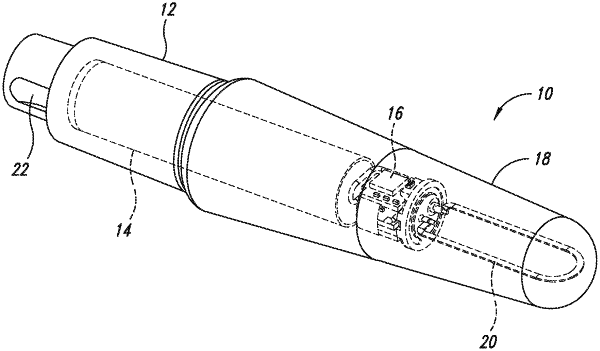| CPC A61F 2/468 (2013.01) [A61B 5/0004 (2013.01); A61B 5/076 (2013.01); A61B 5/4504 (2013.01); A61B 5/4851 (2013.01); A61B 5/686 (2013.01); A61B 5/6878 (2013.01); A61F 2/30721 (2013.01); A61F 2/482 (2021.08); G06Q 40/08 (2013.01); G16H 20/10 (2018.01); G16H 20/30 (2018.01); G16H 20/40 (2018.01); G16H 40/67 (2018.01); H04W 12/037 (2021.01); H04W 84/18 (2013.01); H04W 88/08 (2013.01); A61B 5/112 (2013.01); A61B 2562/0219 (2013.01); A61F 2/12 (2013.01); A61F 2/24 (2013.01); A61F 2002/30331 (2013.01); A61F 2002/30507 (2013.01); A61F 2002/3067 (2013.01); A61F 2002/30884 (2013.01); A61F 2/30942 (2013.01); A61F 2002/30985 (2013.01); A61F 2/32 (2013.01); A61F 2/389 (2013.01); A61F 2/40 (2013.01); A61F 2250/0002 (2013.01); A61F 2250/0096 (2013.01); H04L 67/12 (2013.01)] | 23 Claims |

|
1. A method for identifying a clinical or subclinical condition associated with an implant in a patient, the method comprising:
a. monitoring a first motion of the implant during a first monitoring session based on a first sensor signal generated by a sensor which is directly coupled to the implant, to provide a first monitoring-session data for the first motion comprising a first motion mode derived from a filtered first sensor signal;
b. monitoring a second motion of the implant during a second monitoring session based on a second sensor signal generated by the sensor, to provide a second monitoring-session data for the second motion comprising a second motion mode derived from a filtered second sensor signal; and
c. comparing the first motion mode to the second motion mode, to provide a comparison that is indicative of a clinical or subclinical condition associated with the implant.
|